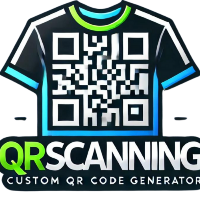
In today's rapidly evolving educational landscape, technology plays a crucial role in enhancing student engagement and learning outcomes. One such innovative tool making waves in education sectors around the world is the QR code. These small, scannable codes are transforming how educational content is delivered, making learning more interactive and accessible. Let's delve into how QR codes are reshaping the educational experience and why they are becoming an indispensable digital tool in classrooms.
Enhancing Engagement and Interaction
QR codes provide a simple yet powerful way to bridge physical and digital learning environments. Teachers and educators can use these codes to direct students to a myriad of resources, from video explanations to interactive quizzes and supplementary reading materials. By merely scanning a code with a smartphone or tablet, students can access a wealth of information that enriches their learning experience.
Example Applications in Classroom
-
Linked Multimedia Resources: Teachers can enhance textbook content by linking QR codes to videos or podcasts that explain complex concepts in a more digestible format.
-
Interactive Learning Stations: Create QR codes for various stations around the classroom where students can learn through interactive activities, fostering a more engaging learning environment.
-
Homework and Assignments: Simplify homework instructions or supplementary exercises by attaching QR codes that lead students directly to online materials or assignment templates.
Simplifying Access to Information
QR codes are not only beneficial for students but also for teachers and administrative staff. These codes simplify the distribution of materials and communication among educational stakeholders.
-
Streamlined Communication: Schools can use QR codes for newsletters or important announcements, allowing quick access to up-to-date information.
-
Resource Sharing: Teachers can easily share lesson plans or collaborative documents with students and fellow educators.
Integrating QR Codes into Digital Tools
With the proliferation of smartphones and tablets, QR codes fit seamlessly into existing digital tools, making them easy to integrate into educational practice.
-
Compatible with Learning Management Systems (LMS): QR codes can be embedded into LMS platforms, enabling easy access to course materials and resources.
-
Augmented Reality Learning: Combine QR codes with augmented reality apps to create a more immersive and context-rich learning environment.
Local Implementation and Impact
While global adoption of QR codes in education is increasing, local communities are also finding unique ways to implement them in schools. Whether it is through local educational apps or community projects, QR codes can be tailored to address specific educational needs and challenges. This localized approach helps schools meet the needs of their students better and enhances the relevancy of learning materials.
Conclusion: The Future of Learning
The integration of QR codes into educational settings is not just a trend but a transformative approach that caters to the modern needs of learners and educators. As educational institutions continue to adopt more digital solutions, QR codes will undoubtedly play a pivotal role in facilitating more practical, interactive, and personalized educational experiences.
For schools interested in implementing QR codes and digital tools, we offer free quotes and consultations to help you discover the best solutions tailored to your specific educational needs. Revolutionize your learning environment today and step into the future of education with QR codes.
Reach out to us for a free quote and see how our QR solutions can transform your educational practices locally and globally. Contact us through our website or phone, and start your journey towards a more interactive and engaging learning experience.


